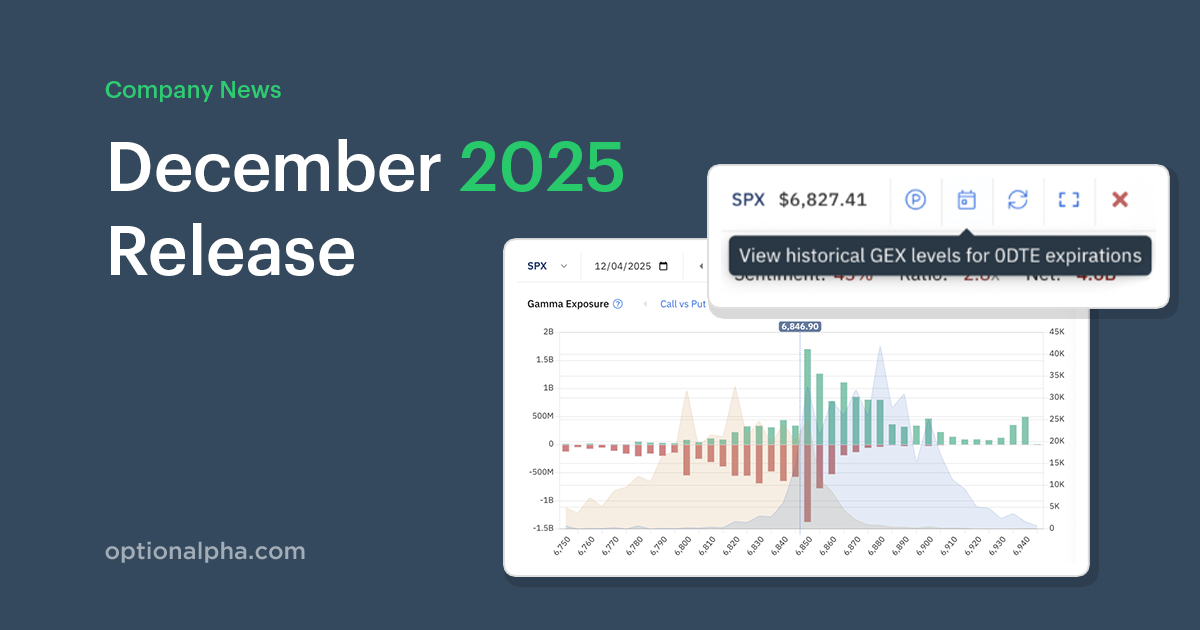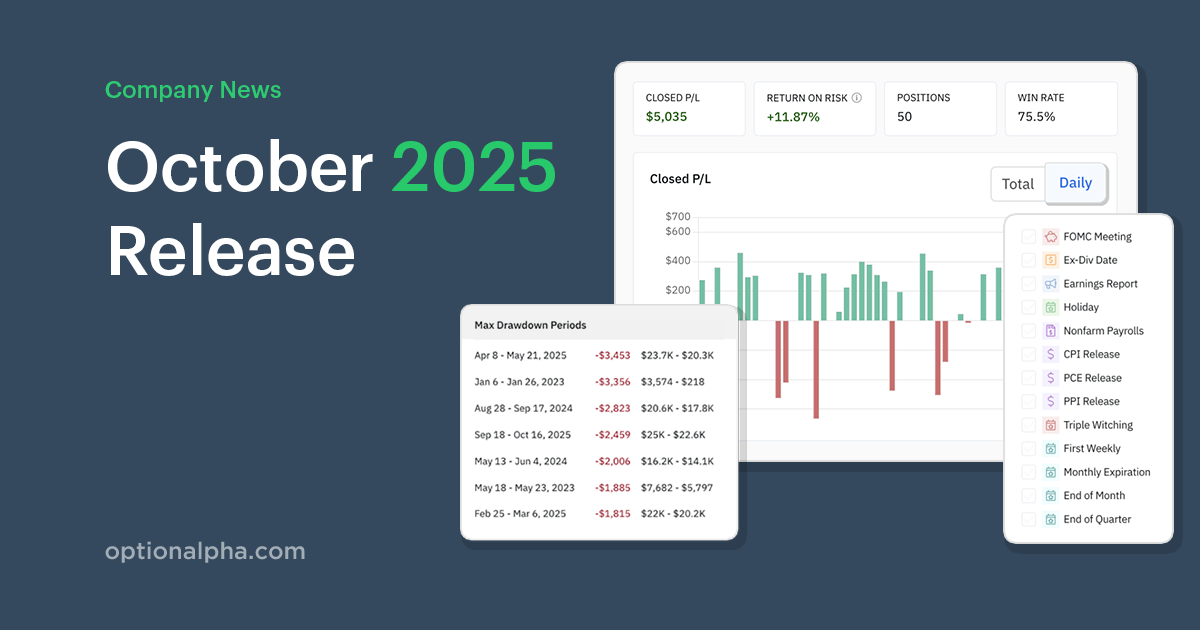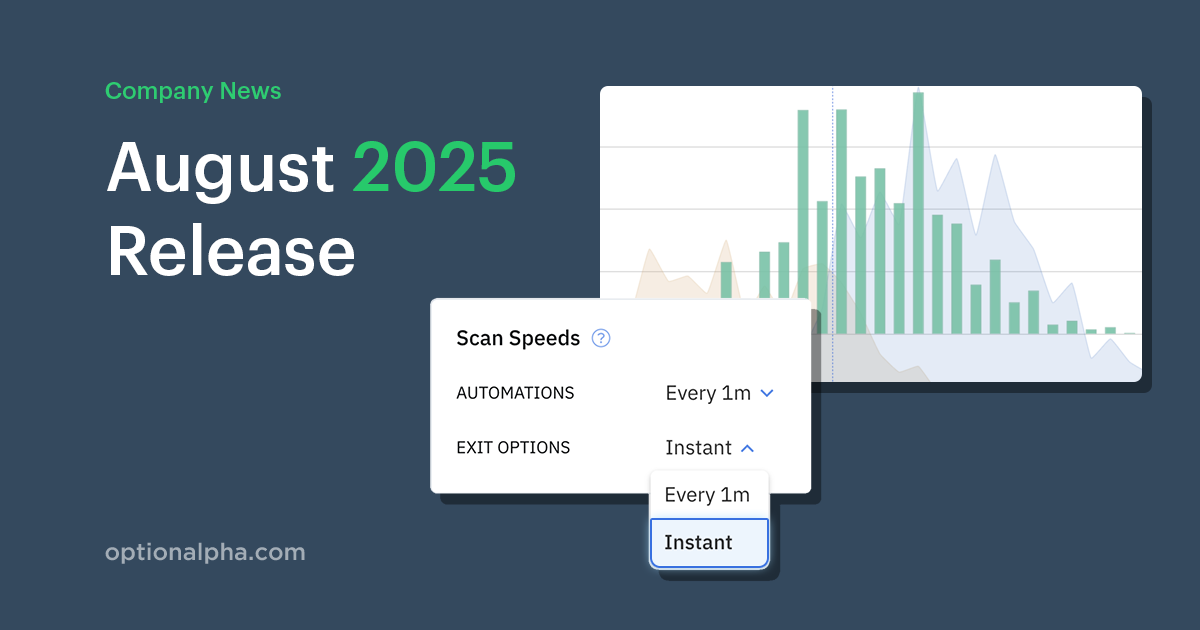Earnings are coming, and you want to trade - I get it.
Not only can earnings season be an exciting and profitable time, but it can also be volatile.
Maybe the company announces tremendous profits or discloses more layoffs; either announcement could impact price movement significantly. Typically, stocks surge higher or plunge lower depending on the information within the earnings release.
You can do very well or very poorly, depending on how much you understand about properly leveraging options. Unfortunately, many investors use the wrong approach when it comes to options and earnings and are left wondering what happened.
However, with the right options strategy, well-educated options traders can capitalize on earnings season. Keep reading to become one of those well-educated investors.
In this post, we will provide insight into:
- What happens to an options contract when a company reports earnings
- How to use options after an earnings release
- Analyzing a company's past performance during earnings
- What strategies to consider based on a ticker’s expected move
How to use options after a company releases earnings
So, how do you trade options after a company releases earnings?
When a company announces their earnings report, investors gain insight into recent and future financial performance. However, there is some uncertainty during that time as well. Investors use the earnings release to indicate how the company will perform in the upcoming quarter.
When next quarter’s earnings are released, investors will gauge that performance against the expectations set three months ago. Even when a company generates a positive number, its stock can still take a significant hit if it doesn’t exceed expectations by beating the estimates.
For example, look at Apple’s (AAPL) recent earnings reports. They beat analysts’ estimates in three consecutive quarters, but the stock price went down all three times the next day! And in August 2023, the stock fell almost 7% five days later, despite beating EPS projections by 5.4%.

Implied volatility
The market is volatile during earnings season because the market takes the last quarter’s earnings predictions into account and assumes the company will meet those predictions. That assumption is factored into the market’s calculation of the stock price.
When the quarter plays out, and the company announces whether they missed or beat the earnings predictions from last quarter, uncertainty and volatility exist because, upon learning whether forecasts were met, investors must process that new information quickly. How the investors react in that short period will trigger upward or downward movement in the stock price.
Investors’ expectations influence implied volatility in the options market.
Implied volatility (IV) is driven by the degree of fluctuation in stock price expected by the investors. So, the higher the expected movement, the higher the IV.
A stock's IV will generally rise as it heads into earnings. Not because the stock is necessarily more or less volatile, but because there is a lot of uncertainty and/or risk around what will happen during the earnings announcement.
When volatility increases, the premium on the option also increases, and everything becomes more expensive.
This one-time event swells option premiums on BOTH sides of the market. For an options trader, this creates an opportunity to sell relatively expensive options and profit from their decline in value.
Volatility crush
Once earnings are released, the market has a relatively better understanding of the company’s future, so the uncertainty typically dissipates. The volatility naturally decreases as uncertainty fades. This decrease is called IV crush and lowers an option's price. We can see in the NVDA chart below that implied volatility dropped following earnings (highlighted by the $).

Of course, we don’t always see a volatility drop, but in most cases, we’ve researched that IV drops quickly after the earnings event.
Analyzing past performance post-earnings
Because earnings announcements are public information, we can analyze the data from previous reports.
More importantly, we can observe how the stock price performed following earnings reports. As shown above, an earnings beat or miss doesn’t always correlate to performance after earnings. Investors need to understand this.
We should pay attention to how much the market expects the price to move relative to its actual average move.
Expected move vs. Actual move
Let’s look at AAPL again. The market implies an expected move of +/- 5.62% immediately following the next earnings date.
The expected move is the amount a stock is expected to move up or down from its current price, as derived from current options prices. The expected move is calculated using the implied volatility of the at-the-money call, and options are put in the expiration immediately following the earnings report.

However, we can see that Apple’s average move one day after earnings is actually only +/-4.20%.

Therefore, traders anticipate a move exceeding the last five years' average.
This isn’t uncommon; actual volatility is often less than implied volatility:

So how can we use this information when considering options strategies to target after earnings?
Three options strategies for earnings
We'll focus on three primary strategies around earnings:
- Credit spreads
- Iron Butterflies
- Iron Condors
Credit Spreads
Vertical spreads are multi-leg option strategies that consist of buying and selling two options with different strike prices and the same expiration date. The options can be call or put options, but they must be the same type. Vertical spreads are risk-defined with limited profit potential. Defined risk trades can be good when trading earnings because significant outlier moves are not uncommon.
Credit spreads are vertical spreads wherein you are a net seller of options. Because options selling benefits from decreasing volatility and an over-expectation of future price movement, we’ll look at short call spreads and short put spreads. Credit spreads can be used if you have a directional bias for a stock.
Short call spread (bearish)
Short call spreads, also known as bear call credit spreads, are a bearish strategy that consists of selling a call option and purchasing a call option at a higher price.

Short put spread
Short put spreads, also known as bull put credit spreads, are a bullish strategy that consists of selling a put option and buying a put option at a lower price.

Vertical spreads can also be debit spreads. You may consider a long call spread or long put spread if you're overly bullish or bearish (respectively) on a stock, and its implied move is more than the historical average post-earnings.
Iron condor
An iron condor involves selling an out-of-the-money bear call credit spread above the stock price and an out-of-the-money bull put credit spread below the stock price.
You'll sell a put and buy another with a lower strike price, and sell a call and buy another with a higher strike price. All options have the same expiration date.
The strategy profits if the stock price stays between the short call and short put. And, when volatility is high, that range can be assumed to be higher than usual.
For example:
- Buy-to-open: $90 put
- Sell-to-open: $95 put
- Sell-to-open: $105 call
- Buy-to-open: $110 call

Iron butterfly
An iron butterfly is similar to an iron condor, except the short call and short put share the same strike price. Iron butterflies are a neutral strategy that relies on the stock staying rangebound to be profitable.
For example:
- Buy-to-open: $90 put
- Sell-to-open: $100 put
- Sell-to-open: $100 call
- Buy-to-open: $110 call

Notice that selling the short options at-the-money brings in more credit than an iron condor. Since it is difficult to realize the max profit potential when trading iron butterflies, most traders will try to exit the trade for a profit after the earnings announcement and before expiration.
AAPL earnings trade example
Let’s continue with the AAPL example and enter an example earnings trade using one of these options strategies.
First, let’s look at the data. Apple reports earnings on Thursday, May 2, 2024. Despite a strong record of beating earnings estimates, their one-day performance post-earnings is inconsistent, with a 50% win rate. Without a clear directional trend, let’s stick to a neutral options strategy.

As mentioned, AAPL’s expected move is +/-5.64%, and their average one-day move is +/4.20. With a history of a less-than-expected move, we’ll focus on selling options.
Here’s a potential trade setup for the expiration one day after earnings. The break-even prices are each more than 4.20% out-of-the-money, and the trade has a 79% probability of profit with an expected value of +$38.62. AAPL’s stock has a 10% range in which to move, and this strategy would make money. Not bad!

Final thoughts
The release of earnings is a binary event involving significant uncertainty. Initially, this uncertainty triggers IV to spike, and once earnings are announced, IV crashes.
Understanding this central concept will take the guesswork out of options trading and enable investors to move forward, build upon that knowledge, and leverage profitable options strategies.




.png)









